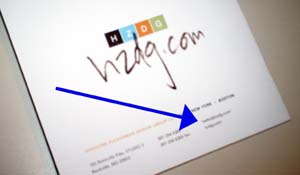Looking for ways to improve your church’s email marketing in the coming year? Here are the top marketing ideas and how they apply to churches from ExactTarget’s 2009 Marketing Almanac.

1. It’s going to get harder to get parishioners to notice and open your emails as more organizations turn to email even more.
Email is becoming more attractive as a relatively cheaper channel compared to other options. Your competitors—other churches, entertainment venues and ecommerce—are going to crank up their email output and you might pay the price.
- Keep focused and helpful.
- Don’t pollute your lists with message creep. (Hey, we need more fundraising—how about sending the contributions appeal to the volunteer openings list? Um, no.)
2. Today’s savvy audiences expect you to offer choices for keeping them informed.
Users want to get updates on their own terms, not yours. They might choose email, RSS, Twitter, text messages, mobile and who knows what’s next. Pick flexible, free options such as Google Groups so your congregation can self select.
3. Cloud computing is here to stay so take advantage of it.
Now’s the time to use distributed services such as Google Groups and Google Analytics.
4. Customization and personalization become must-haves.
Start looking at good sources for more information about your audiences. Try your front desk staff to see the kinds of questions that come in and the needs that you should be meeting. Or run a free survey on your church site such as 4Q from iPerceptions
5. Prepare to face more pressure in the workforce.
Rampant layoffs have many on edge. Those still working are expected to do more with less. You may find it harder to hold onto volunteers in such an environment. But, you might also have opportunities to reach more people who turn to God in times of trouble. Make sure you’re ready to support your current volunteers and to welcome those who are in need.
That’s my take on how your church can make the most of ExactTarget’s predictions. What are you going to focus on next?
 After beginning some website design work discussions with
After beginning some website design work discussions with